Abstract
Following delivery, blood was taken from 122 mothers and their infants' cords for estimation of lead, haemoglobin, packed cell volume and mean corpuscular haemoglobin concentration. All were resident in Kasanda, a township within a radius of 3000 metres of Brokin Hill Lead Mine and Smelter, Zambia, where the annual mean atmospheric lead concentration was 9.6 microgram/m3 and the soil lead concentration 100-9400 p.p.m. Their mean blood levels were high, being 41.2 microgram and 37 microgram/dl for mothers and infants respectively, with a significant correlation (r = 0.77, P less than 0.001). Thus an infant's blood lead at birth closely follows that of its mother even at high values. The increased lead level transfer, however, did not appear adversely to affect the birth weight or red cell values of the newborn. Cord blood lead levels are being used in Broken Hill to monitor a community's exposure to lead.
Full text
PDF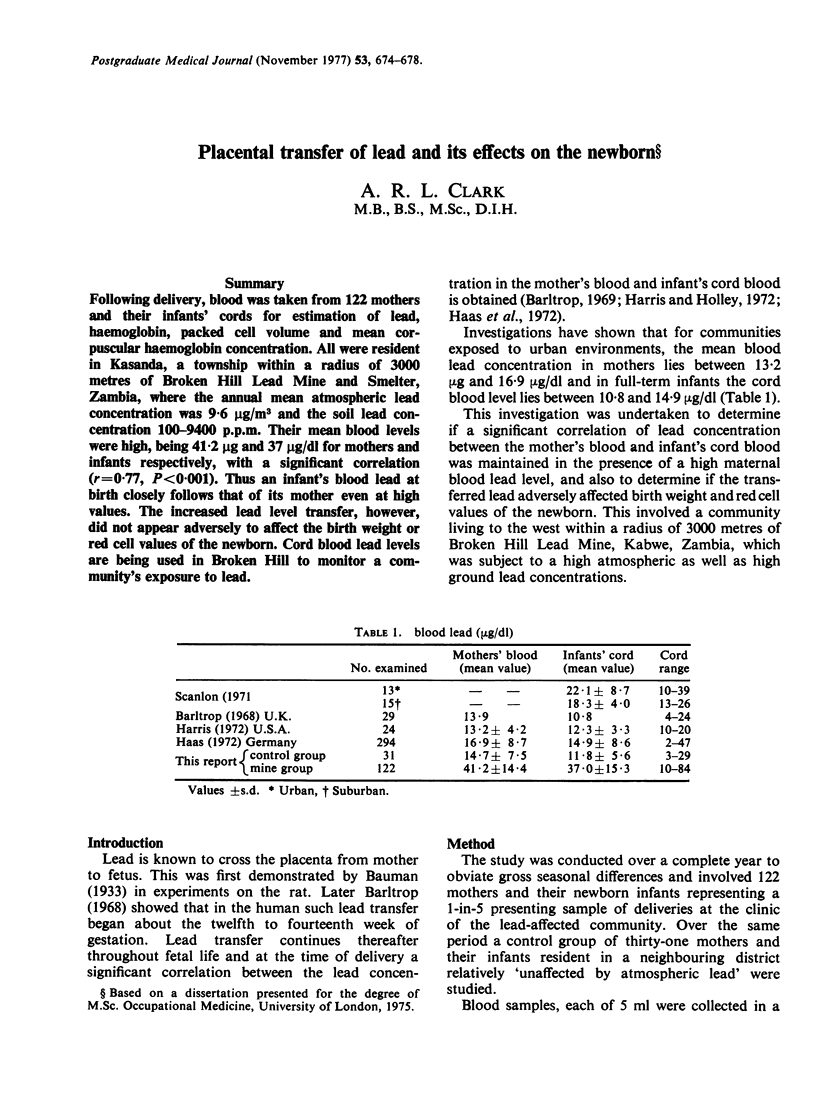
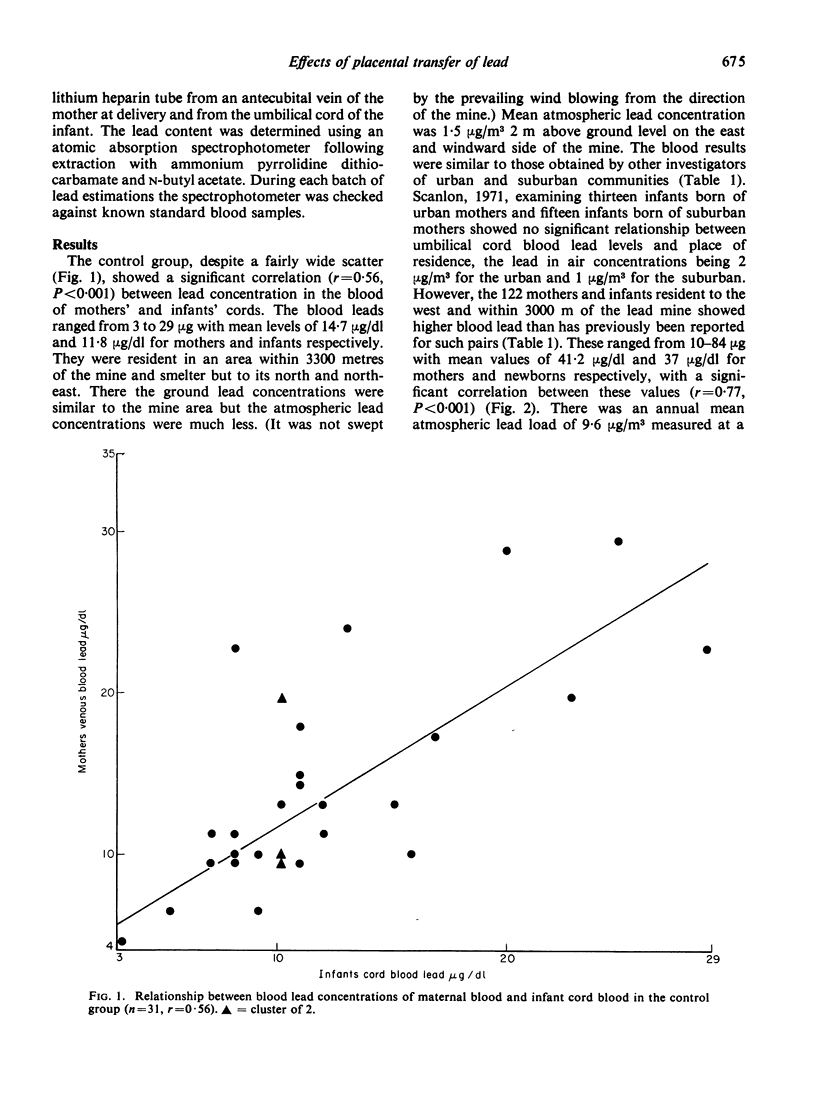
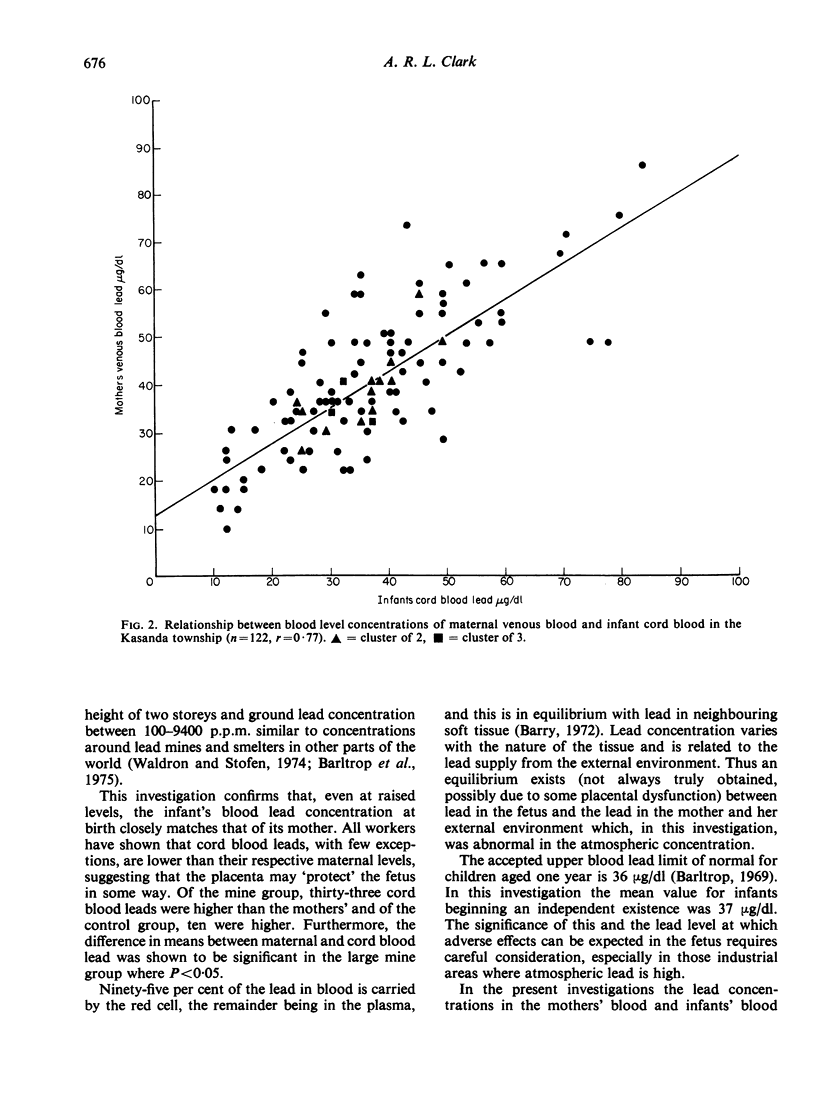
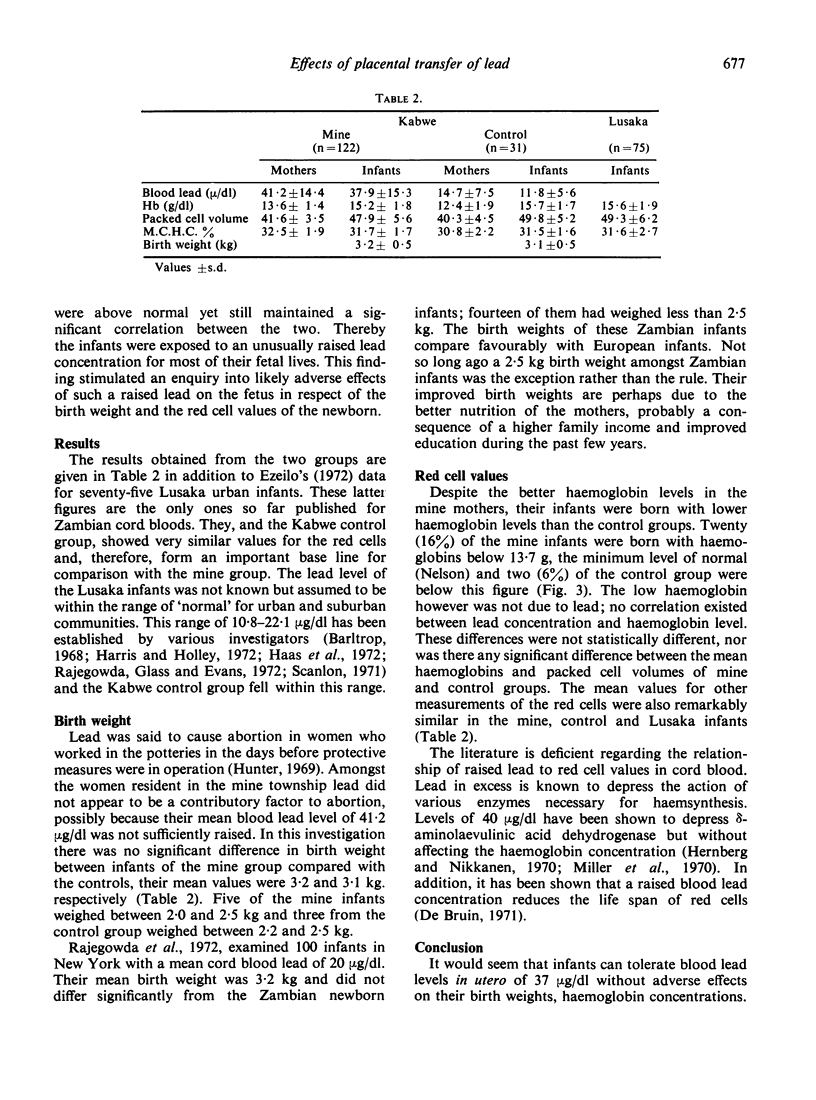
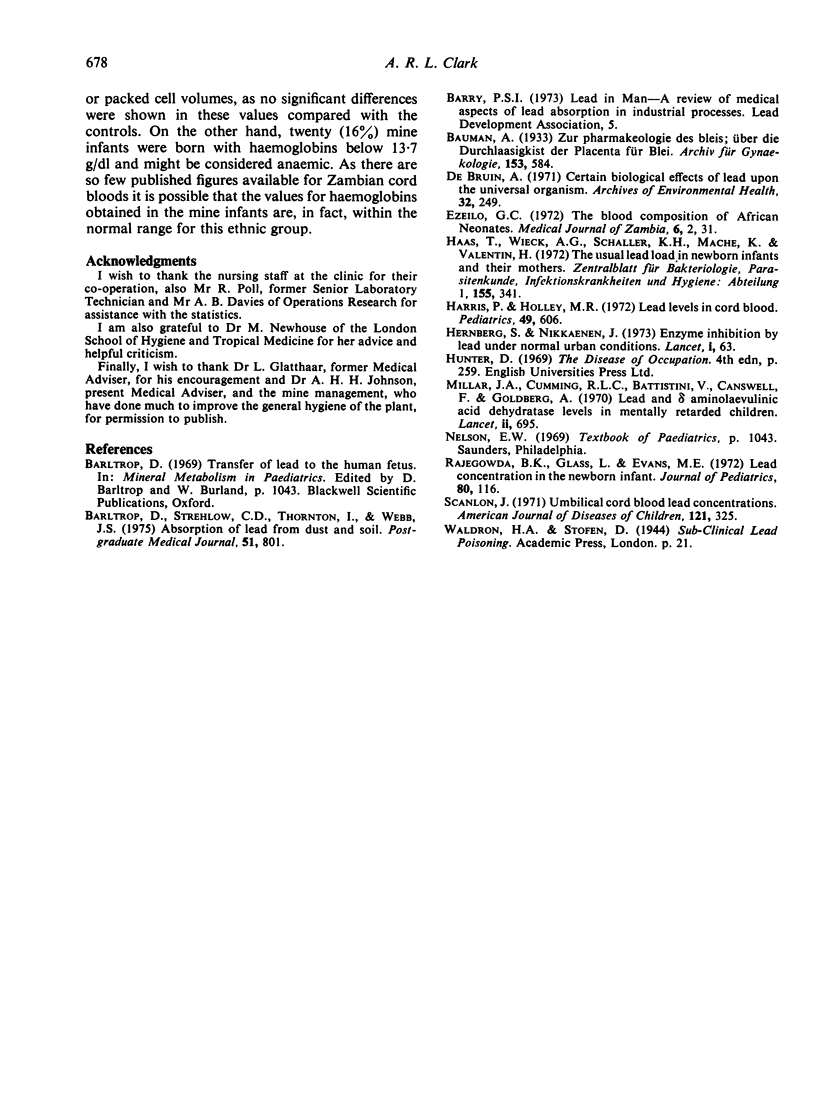
Selected References
These references are in PubMed. This may not be the complete list of references from this article.
- Barltrop D., Strehlow C. D., Thornton I., Webb J. S. Absorption of lead from dust and soil. Postgrad Med J. 1975 Nov;51(601):801–804. doi: 10.1136/pgmj.51.601.801. [DOI] [PMC free article] [PubMed] [Google Scholar]
- Haas T., Wieck A. G., Schaller K. H., Mache K., Valentin H. Die usuelle Bleibelastung bei Neugeborenen und ihren Müttern. Zentralbl Bakteriol Orig B. 1972 Feb;155(4):341–349. [PubMed] [Google Scholar]
- Harris P., Holley M. R. Lead levels in cord blood. Pediatrics. 1972 Apr;49(4):606–608. [PubMed] [Google Scholar]
- Hernberg S., Nikkanen J. Enzyme inhibition by lead under normal urban conditions. Lancet. 1970 Jan 10;1(7637):63–64. doi: 10.1016/s0140-6736(70)91846-5. [DOI] [PubMed] [Google Scholar]
- Millar J. A., Battistini V., Cumming R. L., Carswell F., Goldberg A. Lead and delta-aminolaevulinic acid dehydratase levels in mentally retarded children and in lead-poisoned suckling rats. Lancet. 1970 Oct 3;2(7675):695–698. doi: 10.1016/s0140-6736(70)91962-8. [DOI] [PubMed] [Google Scholar]
- Rajegowda B. K., Glass L., Evans H. E. Lead concentrations in the newborn infant. J Pediatr. 1972 Jan;80(1):116–117. doi: 10.1016/s0022-3476(72)80468-2. [DOI] [PubMed] [Google Scholar]
- Scanlon J. Umbilical cord blood lead concentration. Relationship to urban or suburban residency during gestation. Am J Dis Child. 1971 Apr;121(4):325–326. [PubMed] [Google Scholar]
- de Bruin A. Certain biological effects of lead upon the animal organism. Arch Environ Health. 1971 Oct;23(4):249–264. doi: 10.1080/00039896.1971.10665996. [DOI] [PubMed] [Google Scholar]


